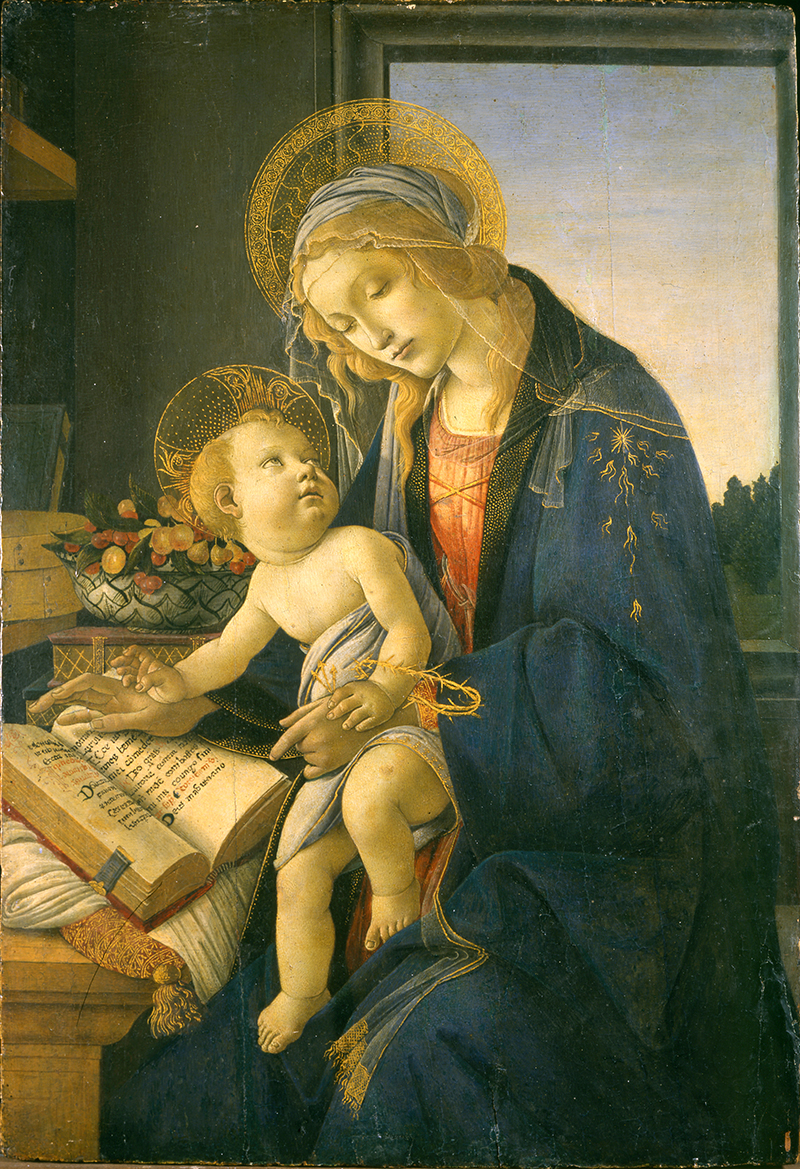 The Mother and the Child are reading a book, which due to its decorations has been identified as the “Book of Hours”, a book of prayers for laymen that was widely popular between the Thirteenth and Sixteenth centuries.
The Mother and the Child are reading a book, which due to its decorations has been identified as the “Book of Hours”, a book of prayers for laymen that was widely popular between the Thirteenth and Sixteenth centuries.
The image retains an every-day life and familiar connotation, as the presence of common objects such as books and boxes highlights. On the right hand side there is a window open on a landscape which, with its sunset light, illuminates the interior. However, the light which pervades the Mother and the Child does not seem to have a natural origin. Rather, it appears to emanate from the two sacred figures themselves, turning the simple and domestic environment of the room into a mystical scene.
Also the fruits on the left are charged with a symbolical meaning: the cherries allude to Christ’s blood, the plums to the tenderness of the Mother and the Child, while figs symbolize Jesus’ Salvation or Resurrection.Although they probably were added elements which Botticelli did not originally paint, the three nails in the Child’s hand and the crown of thorns on His arm also explicitly illustrate the meaning of the painting, namely the allusion to Christ’s death and resurrection.
This painting of about 1480, also known as the Madonna of the Book, is part of the mature artistic production of Sandro Botticelli, but it is still reflecting the influence of Filippo Lippi, who first taught Botticelli and was author of refined sacred images.
This work contains all the elements that characterise this period of Botticelli’s art: the delicate and elegant lines, alongside the calm and refinement of the composition.
